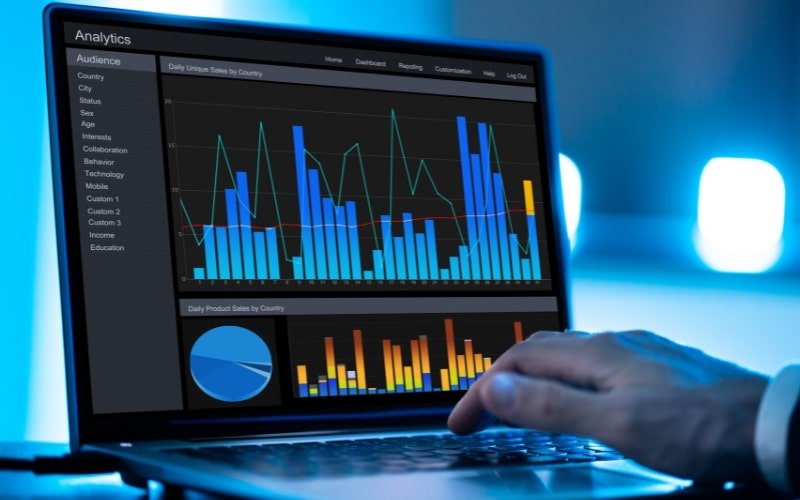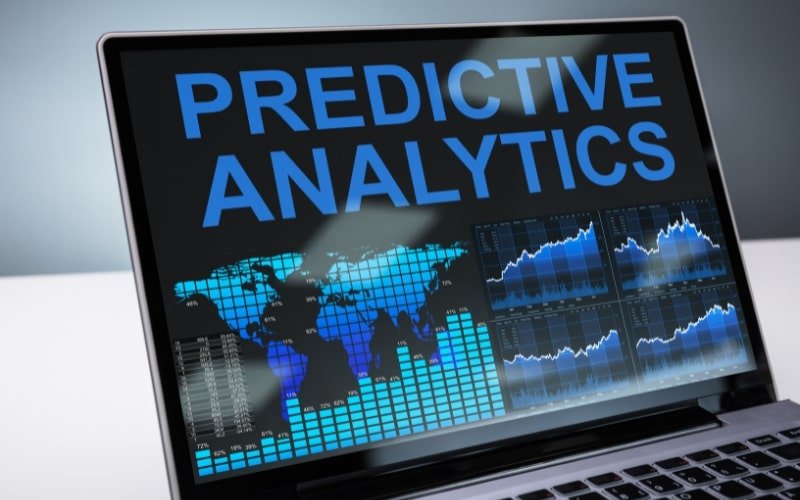One of the most powerful applications of AI and machine learning in the field of SEO is predictive analytics. This technology empowers SEO professionals to make informed, data-driven decisions about their future strategies. Rather than relying on trial and error or only reacting to shifts in user behavior, predictive analytics allows marketers to stay one step ahead of changes in search trends. By analyzing historical data, search patterns, and user behavior, predictive tools can anticipate future trends and provide actionable insights that lead to more effective and forward-thinking SEO strategies.
In this article, we will explore how predictive analytics is transforming SEO, the key advantages it brings, and practical ways businesses can leverage this technology to stay ahead of the competition.
What Is Predictive Analytics in SEO?

Predictive analytics in SEO involves the use of AI and machine learning to analyze past data and forecast future search trends. It can help SEO professionals anticipate changes in user behavior, keyword trends, and algorithm updates. The key benefit is that it enables SEO teams to be proactive rather than reactive, ensuring that they can adjust their strategies ahead of time and capture traffic before their competitors do.
By processing massive amounts of data, predictive analytics tools can recognize patterns that would be impossible for humans to detect. This data is then used to make educated predictions about what keywords, topics, and trends are likely to gain traction in the near future.
The Importance of Staying Ahead of SEO Trends
In the highly competitive landscape of digital marketing, being able to predict and prepare for future trends is invaluable. Search engine algorithms are continuously evolving, and user behaviors are shifting just as rapidly. Businesses that are slow to adapt can quickly fall behind, losing valuable search rankings and visibility to more agile competitors.
By using predictive analytics, SEO professionals can create strategies that align with future trends rather than playing catch-up. This approach can lead to higher search rankings, increased traffic, and a stronger online presence. Moreover, businesses that adopt predictive analytics are able to stay relevant by consistently delivering the type of content and experiences their audience will be searching for in the future.
Forecasting Seasonal Trends and Search Traffic Spikes

One of the most practical uses of predictive analytics in SEO is its ability to forecast seasonal trends. Many industries experience significant fluctuations in search traffic throughout the year, often based on holidays, weather patterns, or consumer behavior. Predictive analytics tools can analyze historical data to identify these patterns and predict when traffic spikes are likely to occur.
For example, e-commerce sites might see increased traffic around Black Friday and Cyber Monday, while travel websites could experience surges before summer vacation periods. By using predictive analytics, businesses can prepare their SEO strategies for these peak times, optimizing their content, product pages, and keywords to capture the maximum amount of traffic.
Additionally, businesses can use this data to create content well in advance of these seasonal trends. By publishing relevant content ahead of time, they can position themselves to rank higher once the surge begins, rather than trying to compete after the trend has already gained momentum.
Identifying Emerging Search Behaviors and Keywords
Another critical application of predictive analytics in SEO is the ability to identify emerging search behaviors and shifts in keyword usage. As technology evolves and new products, services, or cultural phenomena emerge, user search behavior also changes. Predictive analytics tools can help SEO professionals detect these shifts before they become mainstream.
For example, when a new tech product like a smartphone or wearable device is about to be released, search patterns related to that product may start emerging. Predictive tools can identify this uptick in searches, allowing SEO professionals to create content targeting those new keywords before the market becomes saturated.
The same principle applies to broader trends, such as shifts in how people search (e.g., voice search vs. text search) or the types of queries they use (e.g., long-tail vs. short-tail keywords). With predictive analytics, businesses can stay ahead of these trends, ensuring their content aligns with the evolving ways users interact with search engines.
Optimizing Content Timing with Predictive Analytics
Another powerful application of predictive analytics is in determining the optimal time to publish content. Based on historical engagement rates and traffic patterns, predictive tools can recommend the best times to post new blog articles, landing pages, or other content to maximize visibility and engagement.
For example, if data shows that a particular audience tends to engage more with content on weekends or during the evening hours, businesses can tailor their publishing schedule accordingly. This approach can significantly increase the likelihood of capturing and retaining the target audience’s attention.
In addition, predictive analytics can provide insights into how often to update or refresh content. If a certain page is predicted to lose relevance or traffic over time, businesses can use this information to schedule updates, keeping their content fresh and aligned with current trends.
Content Topic Suggestions Based on Predictive Data

Predictive analytics doesn’t just help with keyword trends; it can also assist in choosing the right content topics to focus on. By analyzing search patterns and engagement data, predictive tools can recommend topics that are likely to resonate with a target audience in the near future.
For example, if a certain industry trend is starting to gain traction in the media or social networks, predictive tools can alert SEO professionals to this emerging trend. This insight allows businesses to create content around that topic before their competitors, establishing authority and thought leadership in their niche.
Moreover, predictive analytics can identify content gaps—topics that are gaining interest but have not yet been widely covered. By identifying these gaps, businesses can create content that meets unmet demand, potentially achieving high search rankings with little competition.
Practical Steps to Leverage Predictive Analytics in SEO
Implementing predictive analytics into your SEO strategy requires the right tools and a clear understanding of how to use them. Here are some practical steps businesses can take:
- Invest in AI-Powered SEO Tools: Many advanced SEO tools, such as SEMrush, Ahrefs, and Moz, are incorporating AI and predictive analytics into their platforms. Investing in these tools allows businesses to harness the power of predictive data without the need for in-house AI expertise.
- Analyze Historical Data: Predictive analytics works best when it has access to substantial amounts of historical data. Businesses should regularly collect and analyze data from Google Analytics, Google Search Console, and other SEO tools to identify past trends and patterns.
- Align Content Strategy with Predictions: Once predictive tools provide insights into emerging trends, businesses should adjust their content creation and optimization strategies to align with those predictions. This could include updating old content, creating new content around predicted keywords, or optimizing existing pages for future search behaviors.
- Monitor and Adapt: Predictive analytics is not a one-time solution. Businesses need to continuously monitor their SEO performance and adapt their strategies as new trends and predictions emerge.
Conclusion
Predictive analytics is a game-changing technology for SEO professionals in 2024. By leveraging AI and machine learning to analyze historical data and forecast future trends, businesses can stay ahead of their competition, capture valuable search traffic, and optimize their content strategies for long-term success. As SEO continues to evolve, predictive analytics will play an even larger role in shaping how businesses approach their digital marketing strategies.

